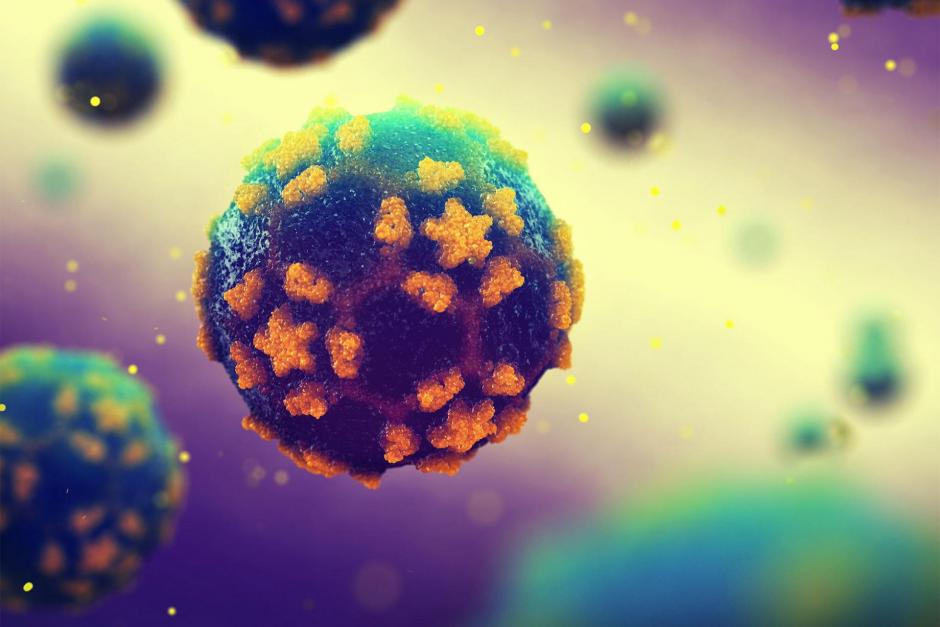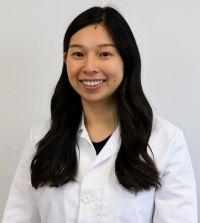Pediatrician Alerts Community About Polio, Need For Vaccinations
Assistant professor Josephine Sun offers expertise on the re-emergence of the polio virus and the importance of routine immunizations.
When Josephine Sun, MD, finished her pediatric residency last year at the Kirk Kerkorian School of Medicine at UNLV, it had been more than 40 years since a case of polio originated in the United States.
“Polio was at its peak in the 1940s and the 1950s,” says the physician who is now an assistant professor at the medical school. “It caused thousands of children to be permanently disabled and thousands died due to paralysis of the muscles we use for breathing. It is a disease I learned about both as an undergrad and in medical school at the University of Utah, all the while thinking that I will likely never encounter it due to how effective the vaccine for it is.”
Now, given what’s transpired in New York state – an unvaccinated 20-year-old man living in Rockland County, NY, was diagnosed in July with polio that resulted in paralysis in his legs – she can’t help but wonder if it’s something she’ll be dealing with in her medical practice.
“It is crazy and unfortunate that something so preventable is now reemerging,” Dr. Sun says.
According to health authorities, polio vaccines, 99 percent effective in preventing the disease, had made the eradication of polio possible in the U.S., with researchers believing the nation reached herd immunity when 80 percent of the population developed immunity.
At the UNLV Health Pediatric Clinic, Dr. Sun says “we have noticed many patients who are now coming in for well-child checkups who have not been seen for their annual checkup since 2020. As a result, they have not been getting their vaccines. Parents have said they were too afraid to leave the house during the beginning of the COVID-19 pandemic…Even though we are starting to catch pediatric patients up with their vaccinations, there are still unvaccinated or under-vaccinated children in the community.”
While no cases of the disease have yet to spread outside New York, health officials there are treating the case of the Rockland County man as the “tip of the iceberg of much greater potential spread,” largely because many polio infections are asymptomatic or mild, with symptoms of sore throat, diarrhea, fatigue, and fever found with many other viral illnesses.
Poliovirus has not only been found in wastewater in the area where the man resides, but in New York City, suggesting, according to health officials, that spread of the virus had been occurring for months. Because the Rockland County man had not traveled abroad during the expected exposure period, health officials believe he contracted the virus locally.
The federal Centers for Disease Control and Prevention (CDC) has pointed out that in the 1940s and 1950s, polio caused widespread panic, with the disease disabling more than 35,000 people each year. Children were not allowed to go outside by frightened parents and travel and commerce between cities with cases of the disease were sometimes restricted. Quarantines were imposed to restrict the movement of well people who had been exposed to the disease.
Health officials say what’s happening in New York should convince adults who are unvaccinated to begin their inoculation regime for their own protection and the protection of others, including children too young to be vaccinated. And it should also convince parents that their children need to complete their entire four-dose polio vaccine series. Children should receive three doses of the vaccine series before age 2 and the fourth dose between the ages of 4 and 6. There is also a one-lifetime booster recommended for anyone traveling or living in an area with high transmission of the virus.
Dr. Sun says it is also critical that children receive vaccinations against diseases such as measles, chickenpox, and diphtheria. “There is no reason for our children to be the victims of diseases when we have the tools to fight them off,” she says.
Like pediatricians across the country, Dr. Sun has been busy making sure children are medically ready for school this fall. As the Reach Out and Read Site Coordinator for UNLV Health Pediatrics, she also makes sure that all children receive a book during their visits. Begun in Boston in 1989, the national Reach Out and Read program has promoted reading between parents and children as part of checkups for more than 25 years. Studies have shown the program leads to increased literacy, language development, and school readiness.
Fluent in Mandarin – though born in Illinois, Dr. Sun spent seven years of her childhood in Taiwan before moving back to the U.S. with her parents – the pediatrician is hopeful that what has happened in New York becomes a call to action in Las Vegas and throughout the country.
“Perhaps,” she says, “the re-emergence of polio can be a catalyst in the reversal of the worrisome trends in routine childhood immunizations such as delayed vaccination or refusal of routine immunizations.”



